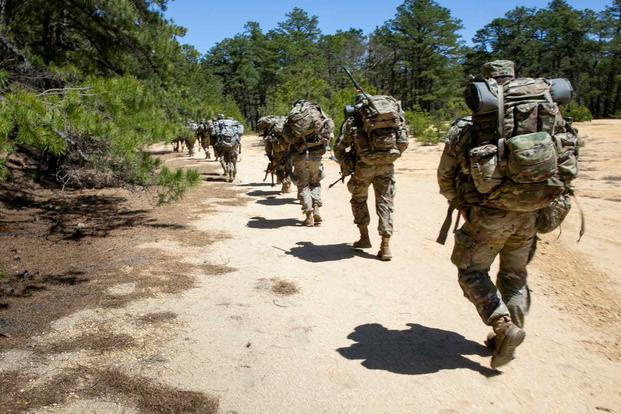The Army is eyeing a roughly $100 million cut to Reserve Officers’ Training Corps scholarships through the rest of the decade as the service aims to correct an oversaturation of officers in the force.
Between 2026 and 2029, Army planners are looking to slash the ROTC program’s annual $315 million budget by $25 million or $30 million, multiple service officials with direct knowledge of the plans told Military.com.
The decision is not final and would ultimately be a part of future budget proposals Congress would have to approve, and service officials are still calculating what impact the cuts may have. However, such reductions could lead to an overall decrease of between 2,500 and 4,000 commissions during the four years. Budgets are also approved annually, which allows the Army to adjust the spigot for commissions if it felt it overcorrected.
Read Next: Army Surpasses its Goal for Recruiting Active-Duty Soldiers, But Just Barely
The move would have no impact on the other military services’ ROTC programs. There would also be no effect on any cadet’s scholarship, and anyone’s admittance into the program would not be interrupted. Instead, the cuts would only impact the number of new cadets the program can bring in.
The ROTC program gives full-time college students the opportunity to earn a commission as an officer while pursuing a degree at a typical civilian university. The scholarships are awarded to students in the program to cover the cost of college.
Roughly three-fourths of all Army officers commission from ROTC, according to service data. On average, the program commissions about 5,600 cadets per year. Even before the proposed cuts, some Army officials behind the scenes have been nervous about the scholarship budget, and getting less mileage out of it, as college costs have skyrocketed in recent decades, far outpacing inflation.
Some 75,000 active-duty Army officers are currently serving, according to federal data. Captains account for the highest concentration of soldiers in any given officer rank, with nearly 26,000 serving.
In recent years, the service has commissioned about 100 more lieutenants than it has needed, service officials explained. The over-commissioning has led to problems in finding jobs for officers in the force. In January, for example, the Army saw it had far too many armor and infantry lieutenants and asked 250 to voluntarily move into support roles such as signal and finance.
Meanwhile, the Army is working with a relatively flat budget and has had to juggle different spending priorities, such as modernizing weapons programs and ramping up its footprint in the Pacific. After a string of media reports highlighted dilapidated living conditions, it also doubled its budget request to Congress for junior enlisted barracks construction and maintenance to $2 billion.
While it manages an abundance of officers, the service is struggling to court young Americans to join its enlisted ranks.
On Thursday, Army officials announced it recruited 55,300 active-duty troops this year, just barely squeaking by its goal of 55,000.
The service did recruit an additional 11,000 in its delayed entry program, a cohort of enlistees who go to basic training up to a year after they enlist. Sometimes those delayed entry participants have to wait to complete high school, or the Army does not have enough space in basic training units for them yet. The delayed entries are always counted in the following year’s recruiting numbers.
It was the first time in two years the service hit its recruiting goals as it faces a more competitive civilian job market; military recruiting efforts historically have been boosted by a poor economy and high unemployment.
Getting young Americans to commission as officers has been less of a struggle for the Army, as ROTC and West Point offering free scholarships and a relatively more comfortable lifestyle has been an easier pitch.
Enlisted ranks also make significantly less money than their commissioned counterparts, and college degrees are starting to become an expectation for promotion, effectively erasing the traditional education gap that has separated the two classes of soldiers.
Related: Army Surpasses its Goal for Recruiting Active-Duty Soldiers, But Just Barely
Story Continues
Read the full article here

